AT Boots
The category names that follow are largely our own creation, and are neither perfect nor all-inclusive. The purpose here is only to give a rough outline of how we at Blister tend to think about modern ski boots, and these general categories will allow us to locate the boots we review among these general categories.
With the proliferation of AT boots, we’re seeing some boots that are optimized for uphill / touring performance; other boots that are optimized for downhill / skiing performance; and a ton of boots that fall somewhere between these Uphill vs. Downhill ends of the performance spectrum, trying to strike a good balance between uphill travel and downhill skiing performance.
Randonee Race Boots
These boots are very light, often quite expensive, and designed for winning races and/or going very far, very fast.

Binding compatibility: Randonee racing boots are for tech bindings only. Most of them are intended for use primarily with super light weight race bindings.
Lightweight AT Boots (~1200 grams per boot)
In our opinion, this category has been defined and dominated by the Dynafit TLT 5 and 6 series, which combine the very light construction of rando race boots with features that increase downhill performance, such as removable tongues and more robust liners and construction.
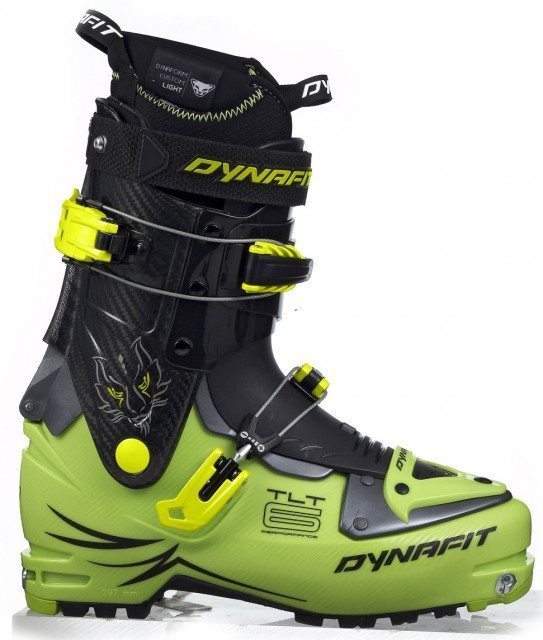
For many ski tourers, this category of Lightweight Alpine Touring boots should be high on the list, and can cover most people for most backcountry endeavors. These boots tend to weigh around 1200 grams per boot (about 2.5 lbs).
In addition to the TLT 5 and 6, the new Atomic Backland boots fall into this category, as does the recently discontinued Scarpa F1 Evo.
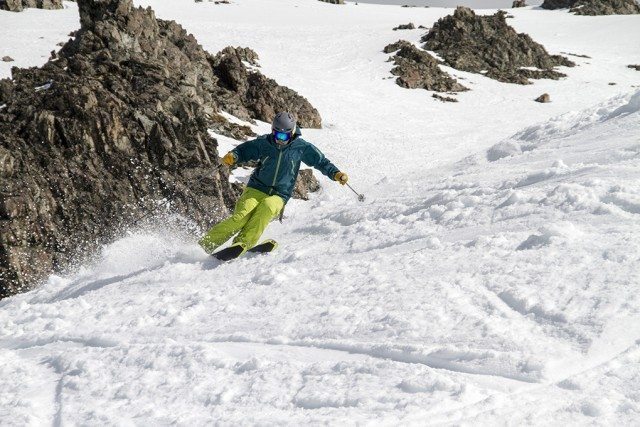
Binding compatibility: The Dynafit TLT6 series and the Atomic Backland Carbon are compatible with tech bindings only. They cannot be used in any frame bindings (such as the Salomon Guardian, Marker Duke, Fritschi Freeride) or any alpine bindings.
The TLT6 is compatible with the Marker Kingpin—with the installation of a special heel piece adaptor. It will also work with the Dynafit Beast bindings with the heel piece adaptor that the Beast requires for all boots.
We are awaiting confirmation on whether the Atomic Backland can be set up to work with the Dynafit Beast or Marker Kingpin, but our suspicion (based on the heel molding) is that it is not compatible.
Performance / Midweight AT Boots (~1500-1600 grams per boot)
Whether most of us really need the extra stiffness (and weight) of these boots for day-to-day ski touring is debatable, but many of us look to this category for a boot that is designed specifically for ski touring with: (a) shorter, rockered soles, lighter weight (~1500-1600 grams per boot), and tech binding compatibility, while (potentially) offering a stiffer, supportive flex that is more akin to a full alpine boot.
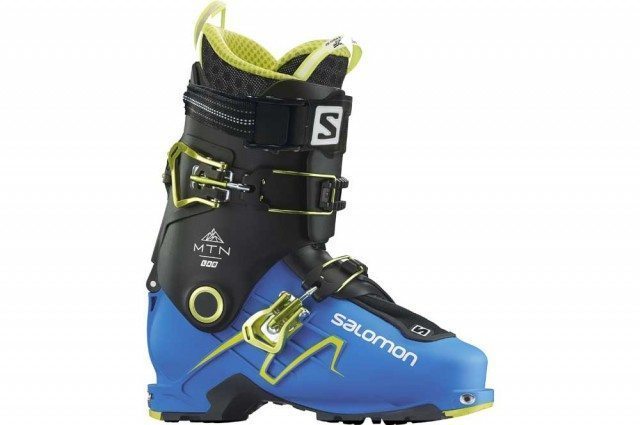
The Dynafit Vulcan, Mercury, and Khion; Salomon MTN Lab and MTN Explore; and Scarpa Maestrale series are good examples, but almost every major boot maker has a boot in this category now. They vary greatly in execution, and some of them don’t ski as well or flex as stiffly as much lighter (but more expensive) boots in the “Lightweight AT” category described above.
This is also the first category of boots we would consider (and could recommend) for both inbounds and out of bounds use. The best heavier, dedicated alpine boots will still provide noticeably better downhill performance than the boots in this class, but if you are spending more of your time touring and less time in the resort—or even if you have close to a 50/50 split between inbounds days and backcountry days—these boots could make for a good one-boot-quiver.
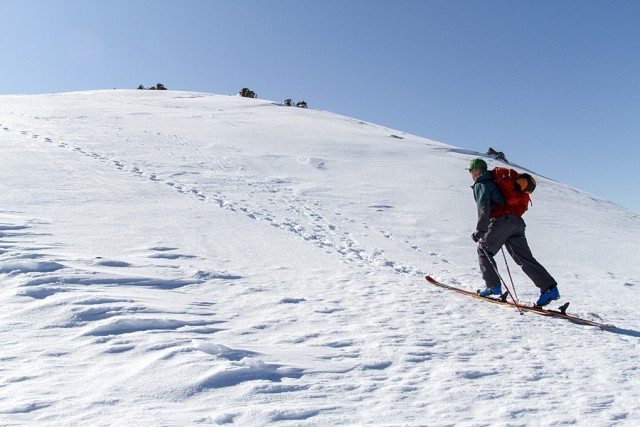
Binding compatibility: These boots are compatible with all tech bindings including the Marker Kingpin and the Dynafit Beast (with the same heel adaptor as with all other boots). In addition they are almost all ISO 9523 compatible which means that they can be used in most frame style AT bindings and even a few specially designed alpine bindings like the newest version of the Salomon Warden MNC as discussed above.
Heavyweight AT Boots (~1800 grams per boot)
These boots are typically in the ~1800 gram range, and look and ski more like alpine boots than most of the boots that would fall in the above categories. They often use lighter plastics and buckles to shave some weight, and usually have removable sole blocks that allow them to be used in normal alpine bindings. This category is typified by boots like the Tecnica Cochise Pro Lite and Scarpa Freedom SL.
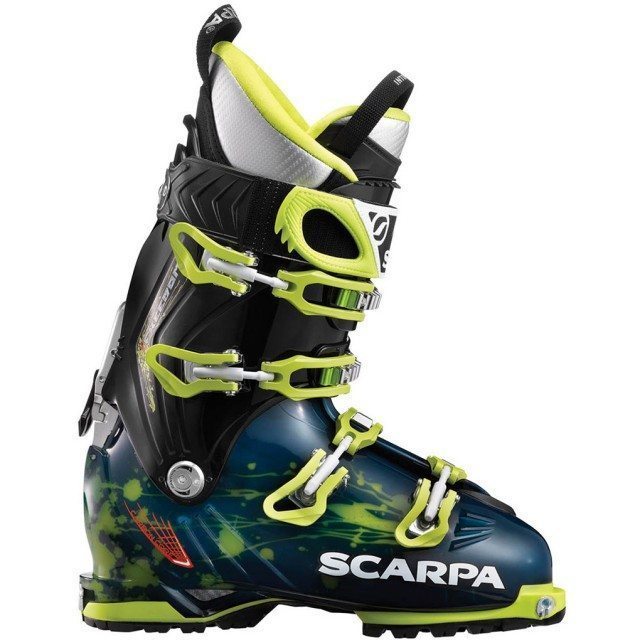
Binding compatibility: These boots are cool in that most of them are compatible with just about any binding on the market through the use of interchangeable sole blocks that will fit tech, frame-style, or alpine bindings. So if versatility is your primary concern, these boots can make a lot of sense.
Alpine Ski Boots with Walk Modes (~2000+ grams per boot)
This is pretty self-explanatory, and includes most boots in the Tecnica Cochise line and the Lange XT series, the Dalbello Lupo SP, Fischer Ranger, K2 Pinnacle 130, and many others, and often weigh in excess of 2000 g per boot. If designed correctly, these boots should flex and ski almost identically to full-on riveted alpine boots, and they implement heavier plastics and hardware to accomplish this.
Boots like these are best for those who are spending most of their time in the resort, but simply want to have the option of a walk mode for the occasional ski tour—and especially if your time hiking or skinning tends to be pretty short.

Binding compatibility: Some of the boots in this category do have tech fitting or interchangeable sole blocks that will fit tech bindings (e.g., Tecnica Cochise Pro 130, Salomon Quest Max 130), but most of them are primarily intended to be used with alpine bindings or frame-style bindings.
Dedicated Alpine Ski Boots (2000+ grams per boot)
As AT gear becomes more and more popular and the push is to make ski equipment lighter and lighter, here is a quick word in defense of traditional ski boots that are designed purely for downhill performance:
If most of your skiing is lift-accessed, and certainly if most of your time is spent on-piste, then please don’t assume that your ski boots ought to have a walk mode. It’s one more thing that can break or develop slop / play over time, and few AT boots can match the progressive flex, lateral stiffness, or damping / suspension of the best dedicated alpine ski boots.
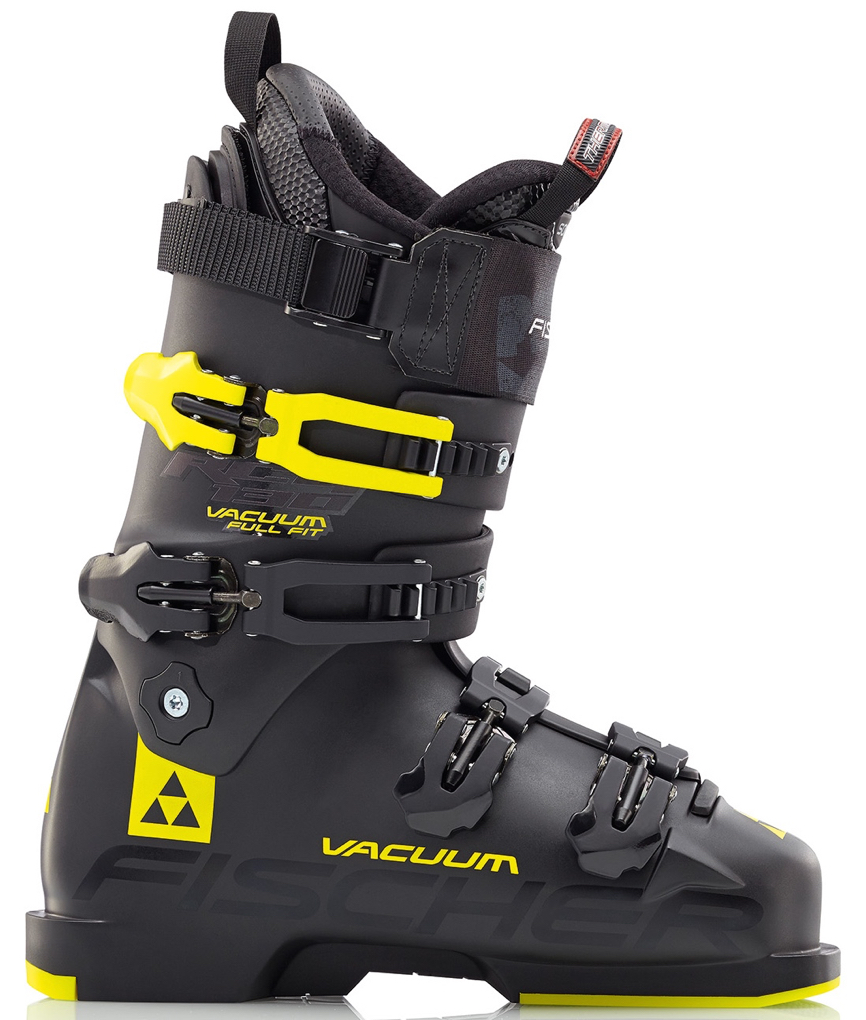
Point is, if you are going to only use one boot for everything, then just as with skis, you are going to have to accept some performance compromises. AT boots make it more comfortable and more efficient to travel uphill. If you’re not traveling uphill, then forget all of this AT tech and go get yourself a comfortable, high-performance alpine ski boot.
Furthermore, more and more non-walk-mode having alpine boots are coming with rubber soles rather than the hard-plastic (and more slippery) soles found on race-oriented alpine boots. So you can still easily get a bit of added traction if you like without going to a boot with a walk mode.
Caveat & Bottom Line
Not all boots fall neatly into our categories. For example, the La Sportiva Spectre weighs just shy of 1500 grams and has four buckles, placing it into our Performance / Midweight AT category, but it doesn’t really ski any better or more powerfully than the Dynafit TLT6 Performance or the Atomic Backland Carbon, which weigh 300 grams less.
Still, these categories ought to help you understand that a “Lightweight AT boot” like the Atomic Backland Carbon is not going to provide the same level of downhill performance as the “Performance / Midweight AT boot Salomon MTN Lab, and certainly not of the much heavier “Alpine Boot with Walk Mode” Lange XT 130. Then again, the Backland also won’t make you drag nearly as much weight uphill….
Point is, we hope these categories help you to make more Apples-to-Apples comparisons as you’re considering which AT boot makes the most sense for you, given how and where you actually ski.

I am a little sceptical about the use of rocker soled ‘midweight’ boots in frame bindings. Last season I witnessed a fellow skier sustain a lower leg long bone fracture due to non release of a Scarpa boot from a Marker frame touring binding. At the time I assumed that the individual interface adjustment was perhaps at fault, despite the fact that all the equipment was new, purchased together, and professionally adjusted.
Since then I have purchased Dynafit Mercury boots, and tried them in a variety of frame type tour bindings ( I have a lot of kit around!). Using self testing of the bindings release, I am unable to come up with a combination I would be happy to ski on. My conclusion is that I will only ski these boots with tech bindings. I am qualified to adjust bindings. I suspect that in the fullness of time this particular rocker/frame combination will be shown to be high risk.
I think that there is need for improved information on equipment compatibility in this area, and it does not seem to be easily available from manufacturers. Could you be more specific about which boots in this class are NOT considered ISO 9523 compatible?
Well done for making a start with this article. I would be interested to see other’s experience in this area.
Tony.
Hi Anthony, Thanks for reading and for your question. Check out the third paragraph under “Standards” where we tried to be pretty specific about which boots are not compatible with frame bindings. Essentially it boils down to the Backlands, TLT6 and all of the boots that fall into the “random race” category. There are probably a few others but the manufacturers are doing better labeling that kind of stuff now. Best of luck finding a combination that works for you.
This is easy to understand if you check out this compatibility table between 4 types of boot soles and 4 types of ski binding : http://www.salomoncertification.com/manuals3/EN_Boot_Binding_Compatibility_17.pdf
Please pay extra care when using boot soles described by manufacturers as “AT” or “Touring” or ” iso touring” and double check that they do strictly follows the specifications set by the ISO 9523 norm.
For example a Scarpa Maestrale ski boot sole is indeed ISO 9523-compliant but a Scarpa Alien ski boot sole is for sure not ISO 9523-compliant.
A few questions about the Warden MNC 13…
1. Is there any downside to the sliding AFD when used with standard alpine boots?
2. Are there any downsides to the Warden toe compared to the STH2 bindings? Specifically, in terms of release and safety.
3. The MNC has automatic toe wing adjustment, while the STH2 has manual toe wing adjustment. Automatic seems easier to set up of course, but are there any downsides to that?
thanks
1. No. The sliding AFD of a MNC-certified binding is 100% compatible with DIN alpine, WTR/WTR+ and AT ISO 9523 soles.
2. Yes. The STH2 binding is only compatible with DIN alpine and WTR/WTR+ soles but is not compatible with AT ISO 9523 soles because the AFD plate does not slide sideways. In other words, a Warden MNC binding is compatible with 3 types of sole whereas the STH2 binding is compatible with only 2 types of sole.
3. None because toe width and toe height are the same between DIN alpine soles and WTR/WTR+ soles for a STH2 binding. However, toe height might be higher with an AT ISO 9523 sole and this must be adjusted in a MNC-certified toe binding. Warning : do not use an AT ISO 9523 boot in a STH2 WTR binding !
Please, check out this compatibility table of 4 types of boot soles x 4 types of bindings : http://www.salomoncertification.com/manuals3/EN_Boot_Binding_Compatibility_17.pdf
Could you briefly talk about adjustment range of the mentioned bindings? I’ve always been confused on whether frame bindings for instance have a huge or a small adjustment range, since i’ve heard both from experienced people. But i imagine they are comparable to alpine bindings, as the heel/toe piece and distance is comparable? Am i wrong?
Agree to disagree on the Spectre. I find it skis better that the TLT5 by a long shot. Skialper reviewed the Spitfire as similar in performance to the TLT6 series, and the Spectre as comparable to the Maestrale and MTN Explore.
Great review. The Scarpa Maestrale RS will not work with a Marker Baron binding. Not sure about other frame AT bindings, but I experienced a huge amount of “slop” in the heel, actually wearing the heel piece on the boot after a handful of days. They have been bombproof with the Dynafit Beast though.
Non of this binding compatibility nonsense with my old Ramers- you could wear one ski boot and one wooden clog if you wanted and it didn’t matter because they wouldn’t release anyway.
Well this is one of my new favorite comments on Blister.
Thanks for your insight. Just to clarify, are straight alpine boots without a walk mode reasonably usable for short tours? I use only one pair of skis and one pair of boots. While I do ski primarily inbounds, I would like to have the capability to do short tours.
Yes. I use a Salomon X-Pro 130 straight alpine boots + Fritschi Diamir Freeride Pro AT frame bindings on +1800 m positive climbing tours without any issues since many years. All 4 buckles + power straps are left open. If you have a tight and snug fit, no blisters so far. No compromise downhill but it’s heavy uphill of course.
What AT binding has the best inbounds performance? I need to ski the whole mountain, including high-speed groomers, moguls, and tight trees. Is there any AT binding out there which doesn’t really affect alpine performance? I have my eye on Guardians. I want the capability to tour, but my priority is still downhill performance. I don’t mind putting up with the extra weight on the way up.
Great breakdown! I have a question regarding the interface of my Dalbello Lupo TI ID boot and the Marker Lorde binding. I purchased the boots and binding new last January. When the boot was new it came with a thick lugged “touring” sole which was replaceable, either with another “touring” sole or with a DIN certified alpine sole. Towards April the soles of the boot had worn thin. With the Lorde bindings design, I was able to progressively adjust the AFD up and forwards to compensate for the loss of rubber, maintaining proper tension of the toe. I tried to buy new “touring” soles last spring but they were sold out. I put in a special order with a local shop in August for the touring sole and it wasn’t until December that I recieved a new “Grip Walk” sole, in place of the touring sole. Now, first off I was super disappointed in the new Grip Walk sole as far as a touring/hiking/scrambling sole. This thing is thin, has plastic in the wrong places and is generally not confidence inspiring, especially on an exposed ridge, but even in the parking lot. Not impressed. Now I go to adjust the binding to the new sole but…. the sole is too thin to use the gross toe height adjustment on “High” and too thick to use with the gross toe height adjustment on “low”. The Lorde binding uses a gross toe height adjustment in the form of a pin that is unscrewed from the side of the toe piece to allow one of two settings, high or low. As mentioned previously, the AFD plate is also adjustable, a 5mm hex wrench drives a worm gear that slides the AFD along a track with a slight rise, in theory offering compatibility with all sole types. The issue is, as mentioned before, with the toe piece at the high position, there is still slop even with the AFD moved all the way forward and up. With the toe piece at low, there is not even close to enough room to allow proper release, as in waaaaay too tight. Perhaps the toe tension is set differently with the sliding AFD plate? I was taught to use a thin plastic card and adjust till it is snug but can still be pulled out when placed between the sole of the boot and the toe piece. So did I find a boot that is a black sheep or am i missing something here? Thanks!!
Great overview… I have traditional alpine ski boots and just bought new skis (Salomon QST 99) so I’m in the market for new bindings. I’d like to have the ability to skin up backcountry areas; however, 90% of my skiing will remain inbounds so I don’t want to sacrifice anything downhill. I also would rather not add extra weight beyond what a typical alpine ski binding would weigh, although I don’t know if this is possible. I know Marker and Fritschi make some bindings that more or less fit what I am looking for and was wondering what you would recommend.
Thanks!
Just purchased last year’s Scarpa Gea which has a rocketed lug sole. Would these be compatible with Fritschi freedom bindings (about 10+ years old).
Debi Wong
We called Fritschi ( I live in Switzerland) and they said to take the boot and binding in to be tested by a shop that handles Fritschi bindings. They are not making the Freeride anymore. We called the shop where we bought the Freeride, 10 years ago. The Shop said that our Gripwalk was compatible but not the ISO 5355 downhill sole.
Check with Scarpa or shop and see what standard it is.
Debi Wong, I have nearly the same question having just purchased the Full Tilt Ascendant boot which has 2 interchangeable soles; a Gripwalk and a DIN 5355 alpine sole. Would the Fritschi Freeride Plus (2009) be compatible with either of these soles?
I have emailed Fritschi and searched the web with no luck.
Hopefully someone here knows.
Are Grip Walk Bindings, compatible with ALL boot soles? The Marker line appears to be as it uses a nice SS friction pad. It would appear that the TOE is the issue, not the heel, is that a good assumption?
I am extremely confused- I have a set of Look gripwalk bindings, and a pair of dalbello Lupo boots with gripwalk soles, but Is it correct that I can’t use the boots with the bindings because they have AT inserts? I don’t understand how 2 metal dimples and a metal tab would change anything considering they don’t change the gripwalk architecture of the sole of the boot. Can you offer any insight to this? I’m guess the dalbello says not to do it for legal reasons but it would more than likely be fine
Hi Noah, If you have Gripwalk boots and Gripwalk bindings you should be fine. I’m not sure where the companies officially stand on this as of 2020 but I agree with you that the inserts shouldn’t be an issue in the real world even if it doesn’t meet the official criteria. I’ve done it myself many times. If there really is an increased risk or malfunction, I’m personally willing to accept that but I think it’s really unlikely that that’s the case.
I have looked everywhere and can not find out what designation my 2011 Marker Barons have, or if they are compatible with grip walk soled boots???!